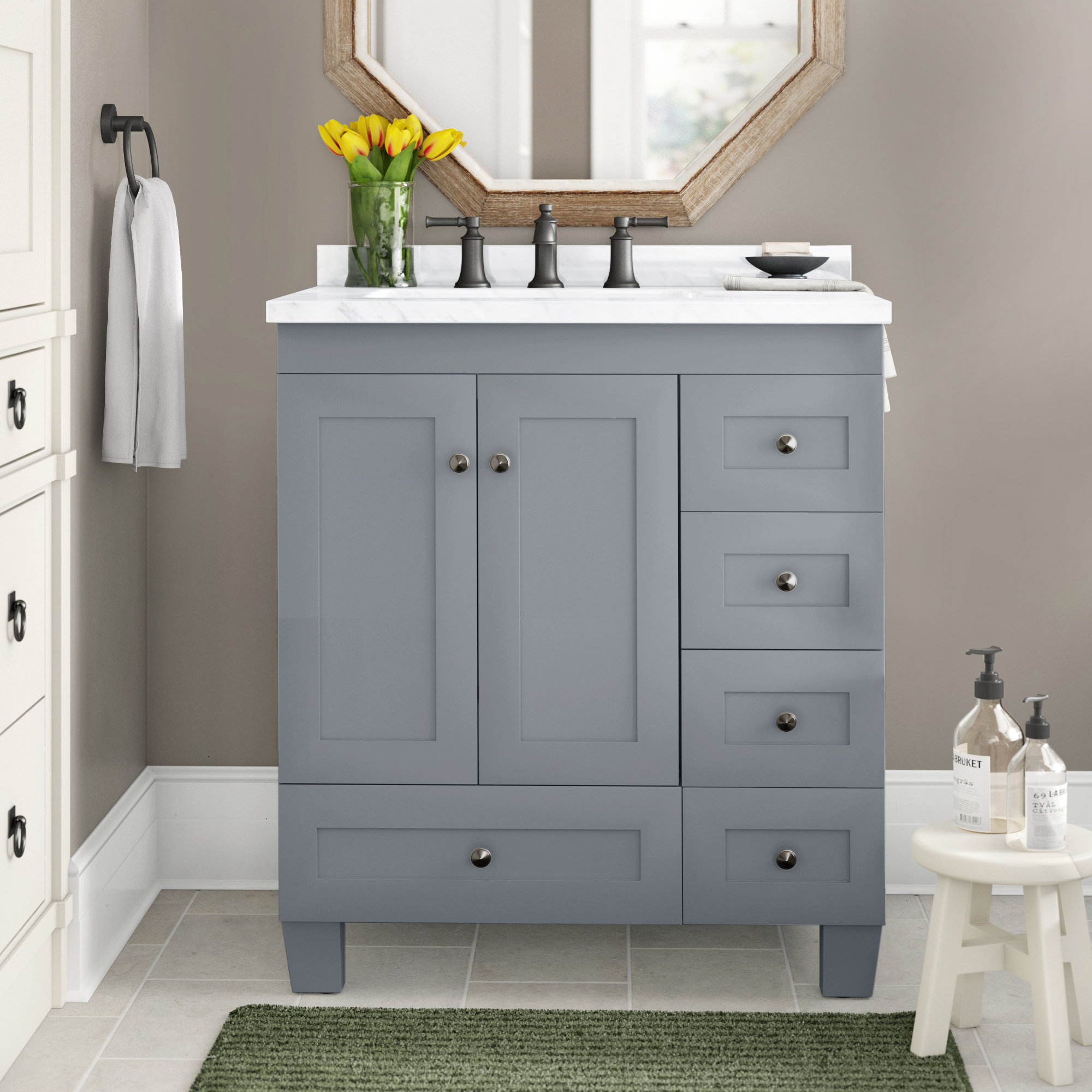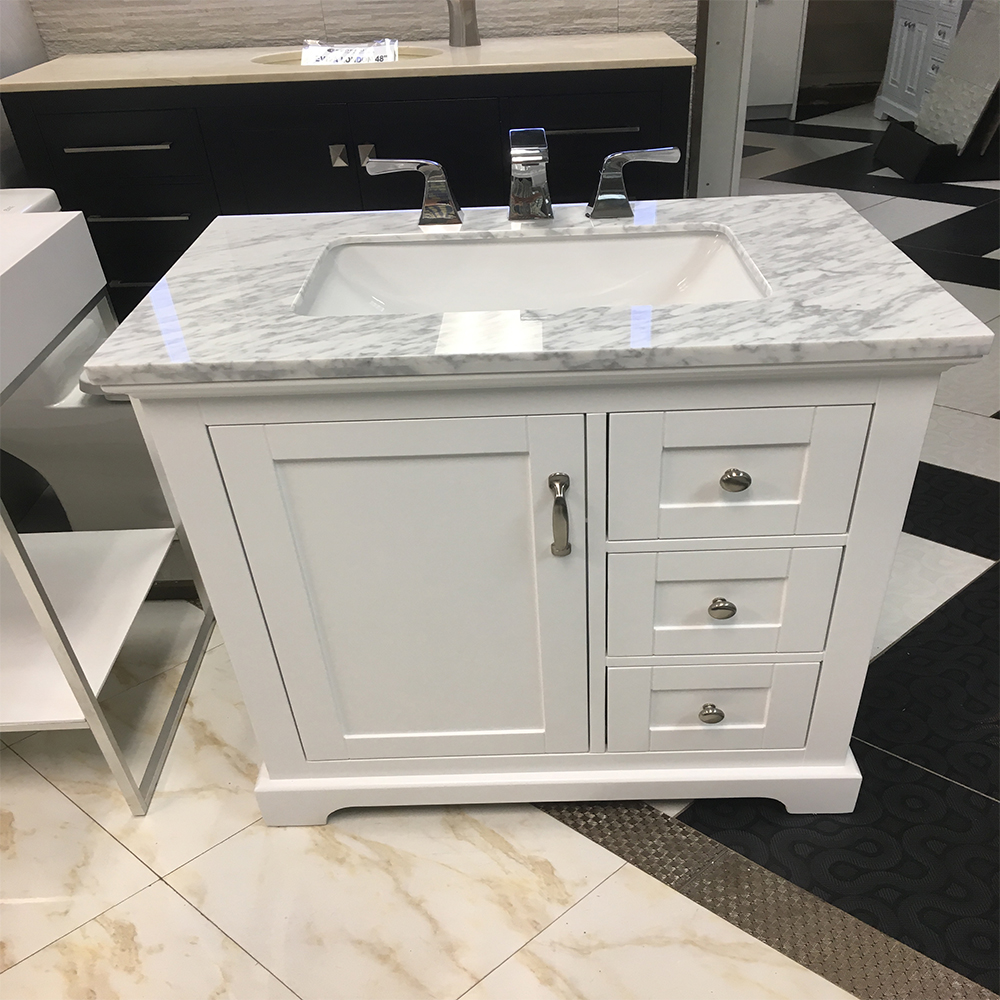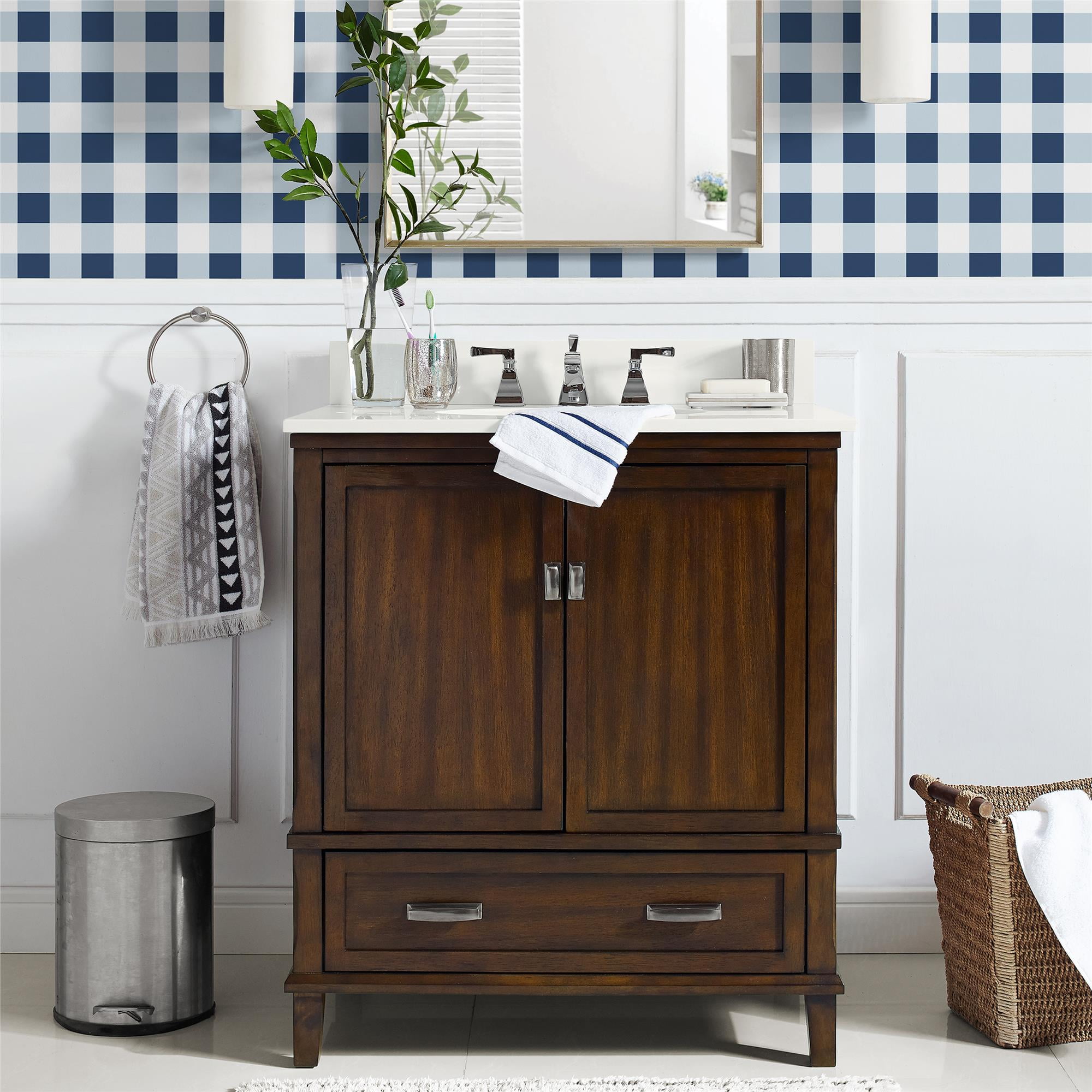The Appeal of a 30-Inch Unfinished Bathroom Vanity

A 30-inch unfinished bathroom vanity offers a blend of practicality and personalization, making it a popular choice for homeowners seeking to create a unique and functional bathroom space. Its compact size makes it ideal for smaller bathrooms, while the unfinished wood provides a blank canvas for customization, allowing you to express your personal style and create a vanity that perfectly complements your bathroom’s aesthetic.
Advantages of a 30-Inch Vanity in Small Bathrooms
A 30-inch vanity is a practical choice for small bathrooms as it offers ample storage without overwhelming the space. Its compact size allows for efficient use of floor space, leaving room for other bathroom fixtures and furnishings.
Benefits of Choosing an Unfinished Vanity for Customization
Unfinished vanities provide a unique opportunity to create a truly personalized bathroom space. You have complete control over the final look and feel of the vanity, allowing you to choose the stain, paint, or other finishes that best match your style and preferences. This flexibility allows you to achieve a unique and cohesive aesthetic that reflects your individual taste.
Aesthetic Appeal of Unfinished Wood vs. Pre-Finished Options
Unfinished wood offers a natural and rustic aesthetic that can complement a variety of bathroom styles. The natural grain patterns and variations in color add warmth and character to the space. In contrast, pre-finished vanities often have a more uniform and polished look, which may not suit all bathroom styles.
Design Ideas for Incorporating a 30-Inch Vanity into Different Bathroom Styles
A 30-inch unfinished vanity can be incorporated into various bathroom styles, from modern and minimalist to traditional and farmhouse.
- Modern Bathroom: For a modern bathroom, consider staining the vanity in a dark, rich color like espresso or walnut. Pair it with sleek chrome fixtures and minimalist countertop materials like quartz or granite.
- Traditional Bathroom: A traditional bathroom can be enhanced by staining the vanity in a warm, natural wood tone like cherry or oak. Pair it with antique brass fixtures and a marble countertop for a classic look.
- Farmhouse Bathroom: For a farmhouse bathroom, consider painting the vanity in a light, airy color like white or cream. Pair it with rustic hardware and a reclaimed wood countertop for a charming and cozy feel.
Considerations for Choosing a 30-Inch Unfinished Vanity: 30 Inch Unfinished Bathroom Vanity

Choosing a 30-inch unfinished bathroom vanity involves considering various factors to ensure a durable, stylish, and functional addition to your bathroom. This includes understanding the different types of wood used, their pros and cons, and the compatibility of countertop materials with unfinished wood.
Types of Wood Used for Bathroom Vanities
The choice of wood for a bathroom vanity significantly impacts its durability, water resistance, and aesthetic appeal. Common wood types used for bathroom vanities include:
- Oak: Known for its strength, durability, and beautiful grain patterns, oak is a popular choice for bathroom vanities. It’s resistant to scratches and dents and can withstand moisture well with proper finishing.
- Maple: Maple is another durable hardwood known for its smooth, tight grain and natural resistance to moisture. It’s often preferred for its light color, which can be stained to achieve various finishes.
- Cherry: Cherry wood is prized for its rich reddish-brown color and elegant grain. It’s a relatively hard wood that’s durable and resistant to moisture. However, it can be more susceptible to scratches and dents than oak or maple.
- Walnut: Walnut is known for its dark brown color and striking grain patterns. It’s a strong and durable wood that’s also resistant to moisture. Walnut’s natural beauty and unique character make it a popular choice for high-end bathroom vanities.
- Mahogany: Mahogany is a luxurious hardwood known for its reddish-brown color and beautiful grain patterns. It’s a strong and durable wood that’s also resistant to moisture. However, mahogany can be more expensive than other wood types.
Pros and Cons of Popular Wood Species
Each wood type has its advantages and disadvantages in terms of durability and water resistance:
| Wood Type | Pros | Cons |
|---|---|---|
| Oak | Durable, strong, water-resistant, beautiful grain patterns | Can be heavy, prone to warping if not properly dried and sealed |
| Maple | Smooth, tight grain, naturally resistant to moisture, light color for versatile staining | Can be susceptible to scratches and dents, less water-resistant than oak |
| Cherry | Rich color, elegant grain, durable, moisture-resistant | Can be more susceptible to scratches and dents than oak or maple, expensive |
| Walnut | Dark brown color, striking grain patterns, strong, durable, water-resistant | Can be expensive, prone to warping if not properly dried and sealed |
| Mahogany | Luxurious, beautiful grain patterns, strong, durable, water-resistant | Expensive, can be susceptible to scratches and dents |
Countertop Material Compatibility
Choosing the right countertop material is crucial for a functional and aesthetically pleasing bathroom vanity. The chosen countertop material should complement the unfinished wood and be compatible with its properties. Some popular countertop options include:
- Granite: Granite is a durable and elegant natural stone that’s highly resistant to scratches, stains, and heat. It’s a good choice for unfinished wood vanities as it complements the natural look and provides a contrasting element.
- Quartz: Quartz is an engineered stone that’s known for its durability, stain resistance, and wide range of colors and patterns. It’s a good choice for unfinished wood vanities as it provides a modern and stylish look.
- Marble: Marble is a luxurious natural stone known for its elegance and unique veining patterns. It’s a good choice for unfinished wood vanities as it creates a sophisticated and timeless look. However, marble is porous and requires regular sealing to prevent stains.
- Solid Surface: Solid surface countertops are made from a non-porous material that’s resistant to stains and bacteria. They’re also available in a wide range of colors and patterns, making them a versatile option for unfinished wood vanities.
- Laminate: Laminate countertops are a budget-friendly option that’s available in a wide range of styles and colors. They’re not as durable as natural stone or solid surface, but they’re a good choice for those on a tight budget.
Cost and Features of 30-Inch Unfinished Vanity Options, 30 inch unfinished bathroom vanity
The cost of a 30-inch unfinished vanity can vary depending on the wood type, countertop material, and features. Here’s a table comparing the cost and features of various options:
| Vanity Type | Wood | Countertop | Features | Estimated Cost |
|---|---|---|---|---|
| Basic | Oak | Laminate | Single sink, open shelves | $300 – $500 |
| Mid-Range | Maple | Quartz | Double sink, drawers, soft-close doors | $500 – $1000 |
| Premium | Walnut | Granite | Double sink, drawers, soft-close doors, built-in mirror | $1000 – $2000+ |
Creating a Custom 30-Inch Bathroom Vanity

A 30-inch unfinished bathroom vanity offers a blank canvas for creating a unique and functional storage solution, especially in smaller bathrooms. You can customize the design to maximize space and enhance the overall aesthetic of your bathroom.
Designing a 30-Inch Vanity with Storage Solutions
The design of a 30-inch vanity for a small bathroom prioritizes maximizing storage space while maintaining a visually appealing aesthetic. Here are some storage solutions to consider:
- Double Doors with Shelves: This traditional design provides ample storage for towels, toiletries, and other bathroom essentials. Consider adding adjustable shelves to accommodate items of varying sizes.
- Single Door with Drawers: This combination offers both open shelf storage and enclosed drawer space. Drawers are ideal for storing smaller items like makeup, brushes, and hair styling tools.
- Open Shelving: Open shelves provide easy access to frequently used items, adding a minimalist touch. Consider using baskets or decorative containers to keep items organized and visually appealing.
- Hidden Storage: Incorporate hidden storage solutions like pull-out drawers or a small cabinet under the sink to maximize space and maintain a clean look.
Staining and Sealing Unfinished Wood
Staining and sealing unfinished wood not only enhances the appearance but also protects the wood from moisture and wear.
- Sanding: Before staining, sand the wood with progressively finer grit sandpaper to achieve a smooth surface and ensure even stain absorption.
- Applying Stain: Choose a stain color that complements your bathroom decor. Apply the stain evenly using a brush or cloth, following the manufacturer’s instructions. Allow the stain to dry completely before proceeding.
- Sealing: Apply a sealant to protect the stained wood from water damage. A polyurethane sealant is a popular choice for bathroom vanities. Apply the sealant evenly using a brush or cloth, following the manufacturer’s instructions. Allow the sealant to dry completely before installing the vanity.
Installing a 30-Inch Vanity
Installing a 30-inch vanity involves connecting plumbing and attaching the countertop. Here’s a step-by-step guide:
- Prepare the Area: Clear the area around the vanity and disconnect the existing plumbing.
- Install the Vanity: Position the vanity in its desired location. Secure it to the wall using appropriate mounting hardware.
- Connect Plumbing: Connect the vanity’s plumbing to the existing water supply and drain lines. Ensure all connections are secure and leak-free.
- Attach the Countertop: Secure the countertop to the vanity using clamps or screws. Install the sink and faucet.
Maximizing Storage Space and Functionality
A 30-inch vanity offers limited space, but with smart design choices, you can maximize its storage and functionality.
- Utilize Vertical Space: Maximize vertical space by using shelves, drawers, and vertical storage solutions like stackable baskets or organizers.
- Utilize Drawer Organizers: Drawer organizers can help separate and compartmentalize items, making them easier to find and access.
- Install a Mirror Cabinet: A mirror cabinet can provide additional storage space while also enhancing the bathroom’s aesthetic.
- Use Wall Storage: Utilize wall space for storage by installing shelves, hooks, or a towel rack to free up vanity space.
30 inch unfinished bathroom vanity – A 30-inch unfinished bathroom vanity is a blank canvas for your creativity, allowing you to personalize it with paint, stain, or even decorative tiles. If you’re looking for a smaller option, a 24-inch rustic bathroom vanity might be a perfect fit, especially in a powder room or smaller bathroom.
No matter the size, an unfinished vanity gives you the chance to make it truly your own, reflecting your unique style and adding a touch of character to your bathroom.
A 30-inch unfinished bathroom vanity offers a blank canvas for your creative vision, allowing you to personalize it with paint, tile, or even a unique countertop. But before you start crafting your dream bathroom, you might want to check for those pesky little critters that can sometimes make their home in the bathroom – those tiny, hard-shelled brown bugs.
If you find yourself battling these unwelcome guests, you can learn more about identifying and eliminating them here. Once you’ve tackled the bug problem, you can finally focus on transforming that unfinished vanity into a beautiful focal point of your bathroom.